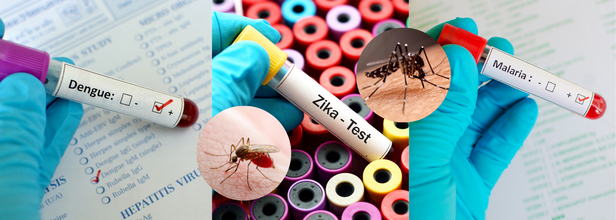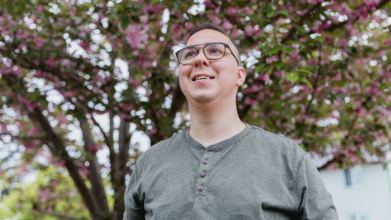- Health Conditions A-Z
- Health & Wellness
- Nutrition
- Fitness
- Health News
- Ayurveda
- Videos
- Medicine A-Z
- Parenting
- Web Stories
WHO Releases First-Ever Clinical Guidelines For Arboviral Diseases Amid Rising Global Threat

Credits: Canva
In a landmark move to strengthen global preparedness and response to mosquito-borne illnesses, the World Health Organization (WHO) has released its first-ever integrated clinical guidelines for the management of arboviral diseases. These include some of the most common and dangerous viruses transmitted by mosquitoes — dengue, chikungunya, Zika, and yellow fever.
The guidelines, published earlier this month, aim to provide frontline healthcare workers, hospitals, and policymakers with evidence-based, standardized protocols to treat both mild and severe cases. With arboviral diseases rapidly expanding in reach and impact, particularly in tropical and subtropical regions, WHO hopes these clinical tools will help reduce mortality and morbidity rates.
What Are Arboviral Diseases?
Arboviral diseases are viral infections transmitted by arthropods, mainly mosquitoes — especially the Aedes aegypti species. This single vector can carry and transmit multiple viruses at once, which makes controlling outbreaks even more challenging.
According to WHO, over 5.6 billion people — more than half of the global population — are at risk of contracting arboviral infections. These diseases often start with non-specific, flu-like symptoms such as fever, rash, and joint pain, making accurate diagnosis difficult without laboratory confirmation. However, they can lead to severe complications, including hemorrhage, neurological damage, or organ failure, if left untreated or mismanaged.
Why the Guidelines Are Critical Now
In a statement, WHO underscored the urgency of a unified global response, citing increasing frequency and severity of arbovirus outbreaks, driven by climate change, urbanization, global travel, and weakened public health systems.
“Outbreaks of arboviral diseases are becoming more frequent, widespread, and severe,” said the WHO. “The new clinical guidelines aim to help health workers distinguish between these infections, which often have overlapping symptoms, and manage cases more effectively even when diagnostic tools are scarce.”
In many endemic regions, multiple arboviruses circulate simultaneously, further complicating diagnosis and treatment. This is where the integrated approach — which applies common principles of care across different arboviral diseases — can help streamline responses during outbreaks.
Key Recommendations from WHO
The new WHO guidelines cover clinical care protocols for both non-severe and severe forms of dengue, chikungunya, Zika, and yellow fever. The recommendations are tailored to help practitioners manage symptoms, avoid harmful treatments, and recognize complications early.
For Non-Severe Cases:
- Use oral fluids to prevent dehydration.
- Treat pain and fever with paracetamol or metamizole.
- Avoid NSAIDs (non-steroidal anti-inflammatory drugs) like ibuprofen.
- Avoid corticosteroids unless symptoms worsen.
For Severe Hospitalized Cases:
- Use crystalloid fluids (not colloids) for IV hydration.
- Monitor capillary refill time and lactate levels to guide fluid resuscitation.
- Apply passive leg raise test to assess shock and fluid responsiveness.
- Avoid corticosteroids and immunoglobulin therapies.
- Do not transfuse platelets unless there is active bleeding, even in patients with low platelet counts.
- In yellow fever-related liver failure, administer intravenous N-acetylcysteine.
- Use experimental drugs like TY014 (monoclonal antibodies) and sofosbuvir for yellow fever only in research settings.
A Step Toward Global Health Security
These new protocols are built on the latest clinical and scientific evidence, and WHO confirmed that they will be updated as new research becomes available. By standardizing treatment across countries, the guidelines are expected to improve patient outcomes and prepare health systems to tackle emerging threats.
As arboviral infections continue to grow in complexity and reach, experts say that timely, consistent, and data-driven care can mean the difference between recovery and tragedy — especially in resource-limited settings.
WHO’s unified approach offers a roadmap for healthcare workers worldwide to navigate the rising tide of mosquito-borne illnesses — and better protect the billions at risk.
Depression, Anxiety, and PTSD Linked to 50–100% Higher Risk of Heart Disease, Study Finds

(Credit-Canva)
In the United States, someone dies from heart disease every 34 seconds, and nearly half of the population has some form of cardiovascular disease (CVD).
What makes these statistics scary is the number of people who experience mental health issues, which is one out of four adults.
A new report from Emory University shows a clear and strong link between mental health conditions and heart disease. The report found that having certain mental health disorders can increase your risk of developing heart disease by a significant amount—anywhere from 50% to 100%. For people who already have a heart condition, these disorders can make things much worse, raising their risk of poor outcomes by 60% to 170%.
Which Mental Health Diseases Affect Heart Health?
The report, led by Dr. Viola Vaccarino and published in The Lancet Regional Health-Europe, highlights the strong link between mental health conditions and an increased risk of developing heart disease. Specifically, it found that certain mental health disorders can increase the risk of developing heart disease by 50% to 100%. For individuals who already have a heart condition, these disorders can worsen outcomes by 60% to 170%.
The report associated the following mental health conditions with these increased risks for developing CVD:
Major depression: 72% increased risk
PTSD: 57% increased risk
Bipolar disorder: 61% increased risk
Panic disorder: 50% increased risk
Phobic anxiety: 70% increased risk
Schizophrenia: nearly 100% increased risk
The study also found a two-way connection. Not only do mental health issues raise the risk for heart disease, but over 40% of people with heart disease also have a mental health condition. For example, a person with heart disease who also has major depression is more than twice as likely to die from their heart condition.
How Is Our Mental And Heart Health Connected?
The report explains how this link works inside the body. It shows that conditions like depression, schizophrenia, and PTSD can cause the body's natural stress response systems to act abnormally. These systems, called the autonomic nervous system and the hypothalamic-pituitary adrenal axis, control important body functions like heart rate and how we handle stress.
When these systems don't work correctly, they can cause long-term problems that harm the heart. This includes things like ongoing inflammation, issues with metabolism, and high blood pressure. All of these issues can raise the risk of developing heart disease over time.
What Are Some Mental Health Barriers That Affect Care?
For people with mental health conditions, getting the right medical care for their physical and mental health can be very difficult. The report points to several key problems.
Social and economic barriers
It can be tough for people with mental health conditions to afford or even get to doctors' appointments.
Communication issues
Sometimes, people may not understand health information or have trouble explaining their symptoms, which can make it harder to get the right diagnosis and treatment.
Stigma
There is still a lot of shame around mental health, which can stop people from seeking help. Doctors may also have their own biases. The report also notes that people with mental health conditions are often left out of clinical trials, so we don't have as much research on them.
Fragmented care
The way our healthcare system is set up often treats the mind and body as separate. This makes it hard to address all of a person's health needs at once.
Your Hormones Could Actually Help Keep Your Bones Strong After Menopause

Credits: Canva
If menopause had a social media profile, its relationship status with women’s health would be… “complicated”. Sure, the hot flashes and mood swings grab most of the headlines, but lurking quietly in the background is another issue: bone loss. Oestrogen is important when it comes to keeping bones strong. Once its levels dip during menopause, women become much more prone to osteoporosis.”
Why Oestrogen Is Crucial
Bone is a living tissue that constantly rebuilds and repairs itself. Oestrogen is what keeps this construction site running smoothly. “When oestrogen drops, the balance between bone building and bone breakdown collapses,” explains Dr. Pramila Kalra, Consultant, Department of Endocrinology, Ramaiah Memorial Hospital. This leads to bones that weaken faster than they can repair.
And it’s not just an invisible problem on a scan. Weakened bones translate into fractures from the most minor of falls. Hips, spines, and wrists are the usual casualties. “To put it into perspective, women over 50 face a 15% lifetime risk of hip fracture, and recovering from one can seriously affect independence,” says Dr. Kalra.
Understanding Hormone Replacement Therapy (HRT)
“HRT replaces the hormones your body no longer produces enough of after menopause, and this can significantly slow down bone loss,” says Dr. Kalra. Not only does it help bones maintain their density, but in some cases, it can even nudge bone strength upwards.
HRT isn’t a one-size-fits-all pill. It comes in forms that suit different lifestyles: tablets, patches, gels, and even sprays. For women with a uterus, progesterone usually joins the prescription party to protect the uterine lining. And along with stronger bones, many women also notice relief from hot flashes, night sweats, and that infamous menopause brain fog.
Is HRT Right for You?
Before you rush to the pharmacy, there are questions worth asking. “HRT works best for women who have severe menopausal symptoms or are at a high risk of osteoporosis,” says Dr. Kalra. Women who experience early menopause, particularly before age 45, are often strong candidates for HRT because their bones face years of oestrogen shortfall.
Safety concerns around HRT have caused plenty of headlines in the past. But newer research has changed the conversation. “When HRT is started within 10 years of menopause and before age 60, the benefits outweigh the risks for most women,” explains Dr. Kalra.
Still, the risks are not zero. There may be a slight increase in the chance of blood clots or breast cancer depending on personal health, the type of HRT, and how long it’s used. “That’s why an individualised discussion with your doctor is crucial. It’s about weighing your personal benefits against possible risks,” she stresses.
A Bigger Bone Health Plan
Dr. Kalra recommends thinking beyond medication. A diet rich in calcium and vitamin D, regular exercise—particularly weight-bearing workouts—and avoiding smoking and excessive alcohol are all essential. “HRT is most effective as part of a holistic bone health plan,” she says.
The Need for Personalised Care
There’s no “universal prescription” for menopause management. “The decision to start HRT must be highly individualised,” advises Dr. Kalra. Your doctor will consider your family history, existing health conditions, and results from a bone density scan. Together, you can discuss the type, dose, and duration of therapy that best fits your needs.
The conversation should cover not just symptoms but also your future risks. “It’s not about erasing menopause—it’s about empowering women to make informed choices so they can stay active and independent for years to come,” says Dr. Kalra.
Menopause may be inevitable, but brittle bones don’t have to be. With the right support, including HRT where appropriate, women can safeguard their bone health and dramatically reduce their risk of fractures. “Think of it as investing in your future mobility and independence,” Dr. Kalra concludes.
Study Reveals Why Autism in Over-40s Rarely Gets Recognised

Credits: Canva
Autism is often painted as a childhood condition, usually spotted in the school playground when social quirks or communication differences raise eyebrows. But what happens when those children grow up without anyone connecting the dots? According to new research from King’s College London, the answer is unsettling: most autistic adults over 40 are still flying under the diagnostic radar.
The review, published in the Annual Review of Developmental Psychology, estimates that a staggering 89 per cent of people over 40 with autism remain undiagnosed. To put that into perspective, while around 23 per cent of autistic children under 19 are missed, nearly 96 per cent of those over 60 have never been recognised as autistic. That’s not just a gap; that’s a canyon.
The Age Factor
When the researchers broke it down by age and gender, the numbers looked even more lopsided. Among men aged 40 to 59, more than 91 per cent had never been diagnosed. For women in the same age group, the figure was almost 80 per cent. By the time people reached their sixties, both men and women crossed into the 96 to 97 per cent range of being undiagnosed.
Compare that with the 20 to 39 age group, where roughly half remained undiagnosed, and the generational divide becomes clear. Today’s younger adults are far more likely to be spotted, assessed and supported. Older adults, meanwhile, have often been left to muddle through without a name for their lifelong differences.
Why It Matters
Gavin Stewart, lead author of the study, explains that a lack of diagnosis means many autistic adults were never offered the right support, leaving them more vulnerable to age-related problems. These range from social isolation to poor physical and mental health.
The review found that autistic people in middle age and beyond have higher rates of almost every health condition compared to non-autistic peers, like heart disease, neurological issues, autoimmune disorders, gastrointestinal problems, anxiety and depression. Add age-related conditions like osteoporosis, arthritis and Parkinson’s disease, and the picture gets even more complicated.
Even more concerning, autistic older adults were six times more likely to report suicidal thoughts or self-harm and four times more likely to develop early-onset dementia.
The Hidden Struggles
The study highlighted another layer of challenge: healthcare itself. Many older autistic adults face obstacles in accessing medical support due to communication differences, sensory sensitivities or simply not knowing how to navigate the system. Combine that with a shortage of healthcare professionals trained in recognising autism in adults, and it’s no wonder so many cases slip through the cracks.
Professor Francesca Happé, co-author of the review, stresses that this is a global public health issue. “Understanding the needs of autistic people as they age is a pressing global public health concern. As autistic people age, the nature of the challenges they face changes. We must adopt a lifespan approach that funds long-term research, integrates tailored healthcare, and expands social supports so that ageing autistic people can live happy and healthy lives,” she says. In other words, autism doesn’t disappear after childhood, so neither should support.
Lost in the Shuffle
The findings also suggest that research into autism may have been skewed for years. If most older adults remain undiagnosed, then studies have largely overlooked them. That means our current understanding of how autistic people age is incomplete at best. No wonder policies and services have not caught up.
Employment struggles, strained relationships and social isolation were all noted as common experiences for older autistic adults. Without the framework of a diagnosis, many never knew why they felt out of step with the world, and their difficulties were often chalked up to personality flaws or “just how they are”.
Why a Diagnosis Still Matters
If you’re wondering whether getting a diagnosis later in life makes a difference, the answer is yes. Recognition can bring clarity, opening doors to support systems, healthcare adaptations and even financial benefits. It can also reshape how family, friends and colleagues understand a person’s behaviour and needs.
The NHS encourages adults who suspect they might be autistic to speak to their GP and ask about a referral for an assessment. Specialists can help by gathering life history, speaking with people who know you well and observing how you interact with others.
A Call for Change
The review ends with a clear message: it’s time to stop treating autism as a childhood-only issue. For too long, older autistic adults have been invisible, their experiences untold and their needs unmet. With diagnosis rates still alarmingly low, researchers are urging more studies, better services and a cultural shift that embraces autism across the lifespan.
© 2024 Bennett, Coleman & Company Limited

